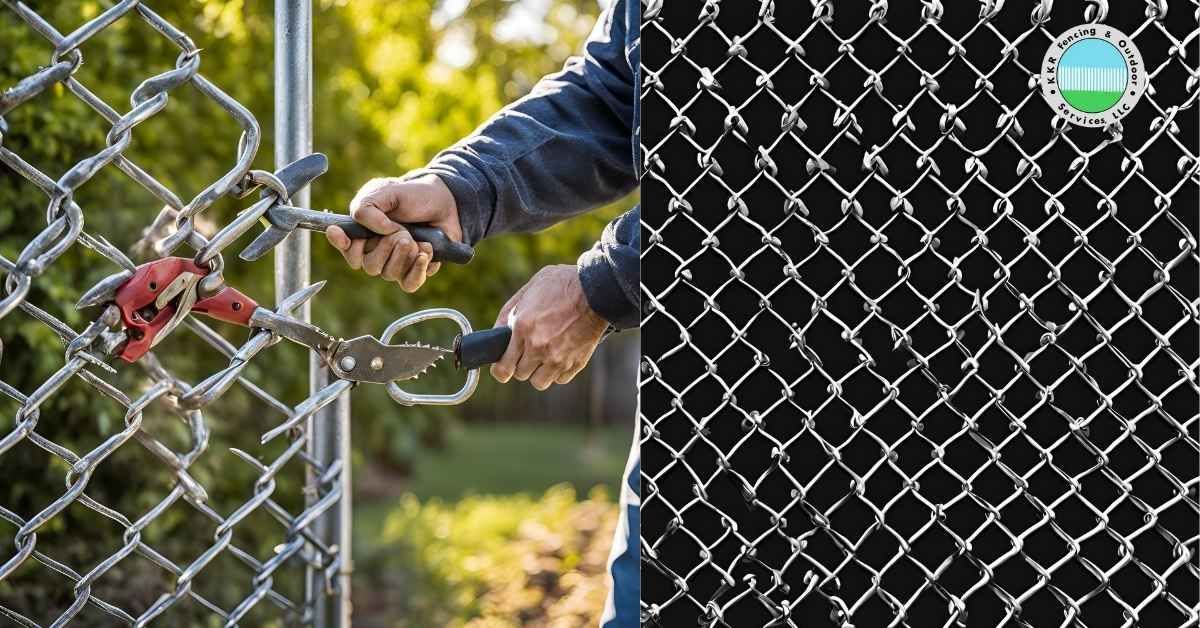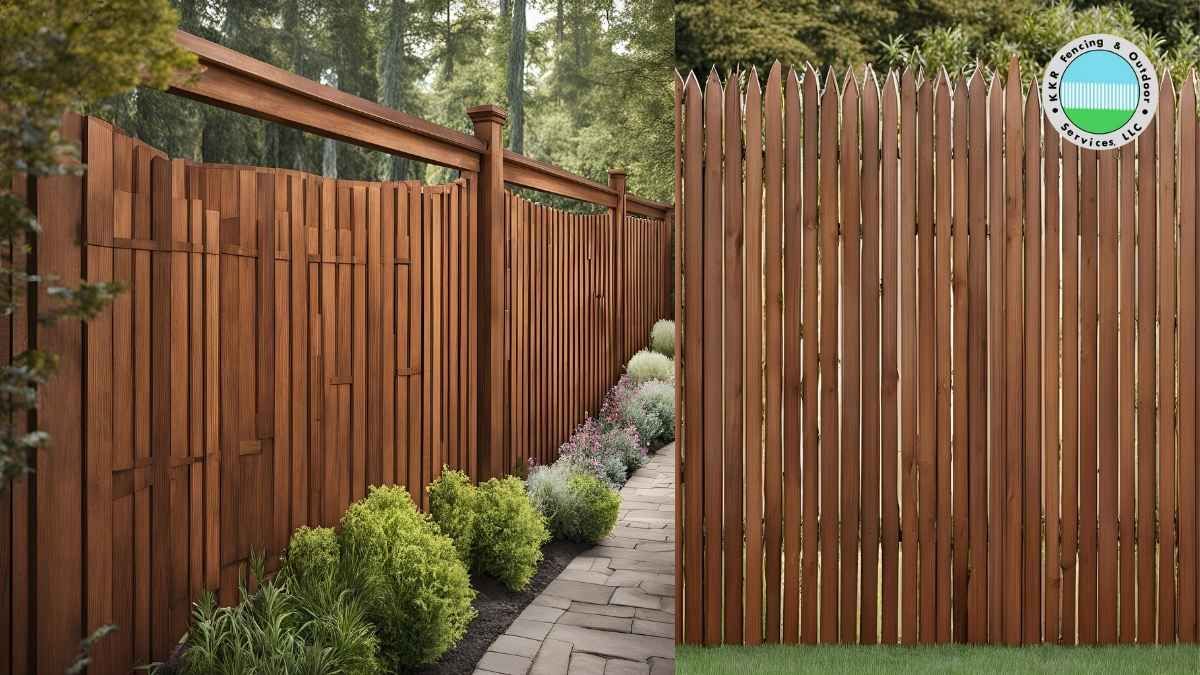Get Started On Your Fence Project | Call Today for a FREE Estimate
Can A Skunk Climb A Fence
Skunks are notorious for the foul odor they emit when threatened, but they can also pose other problems, such as carrying diseases and damaging property. Understanding their climbing abilities and how they can enter your property is crucial for effective prevention. This article explores whether skunks can climb fences, how they might access your yard, and the best preventive measures to keep them out.
Skunks, particularly spotted skunks, are capable climbers and can scale various types of fences, but implementing proper preventive measures can effectively keep them out.

Skunks and Their Climbing Abilities
General Climbing Skills
Skunks are generally not known for their climbing abilities compared to other animals like raccoons or squirrels. However, they do possess sharp, powerful claws that allow them to climb certain surfaces. While they are not as agile as some other animals, their claws enable them to grip and climb when necessary, especially in search of food or to escape predators. The ability to climb varies significantly between skunk species, making it important to understand the specific behaviors of the skunks in your area.
Species Differences
There are different species of skunks, and their climbing abilities vary. Spotted skunks are excellent climbers and can easily scale fences up to 6 feet high. Their smaller size and agility make them adept at climbing trees and other structures. On the other hand, striped skunks, which are more commonly encountered, are poor climbers. They struggle with higher fences due to their heavier bodies and long claws, which are more suited for digging. Understanding these differences can help in implementing more effective preventive measures tailored to the specific species.
Surface Preferences
Skunks can climb various surfaces, including wooden fences, chain-link fences, and wire mesh. Spotted skunks, in particular, can climb almost any type of fence with ease. They use their sharp claws to grip the surface and pull themselves up. Striped skunks can climb wooden boards and wire mesh but rarely climb trees due to their long claws. Knowing which surfaces are more challenging for skunks to climb can guide homeowners in choosing the best materials for their fences.
How Skunks Access Fenced Yards
Climbing Short Fences
Skunks, especially spotted skunks, can climb short fences and use tree branches or other structures to bypass taller obstacles. They are opportunistic and will take advantage of any accessible route to enter a yard. It is important to trim tree branches that hang over fences to prevent skunks from using them as a bridge. Additionally, ensuring that no objects are placed near the fence that could aid in climbing is crucial for preventing skunks from gaining access.
Burrowing Under Fences
Skunks are proficient burrowers and can dig under fences to gain access to properties. This is a common method for striped skunks, which are less skilled at climbing. They dig burrows to create dens and find food, making it crucial to secure the area beneath your fence to prevent entry. Installing underground barriers or extending the fence below ground level can effectively deter skunks from digging under the fence.
Preventive Measures for Keeping Skunks Out
Fence Construction Tips
To effectively keep skunks out, ensure that your fence is built without gaps or holes. Skunks can squeeze through surprisingly small openings, so inspect your fence regularly for any potential entry points. Using solid materials and securing any weak spots will help deter skunks. Opt for fences that are at least 6 feet high if dealing with spotted skunks, and consider additional reinforcements at the base to prevent burrowing.
Using Solid Metal Fences
One of the best ways to prevent skunks from climbing is to use solid metal fences. Skunks cannot dig their claws into the metal, making it difficult for them to climb. While metal fences can be more expensive than wooden or chain-link fences, they provide a more reliable barrier against skunks and other climbing animals. Metal fences also require less maintenance and are more durable in the long term, making them a cost-effective solution.
Underground Barriers
To address the burrowing issue, install underground barriers along the base of your fence. This can be done by burying hardware cloth or metal mesh at least a foot deep around the perimeter. This barrier will prevent skunks from digging under the fence and entering your yard. Combining underground barriers with a solid fence can provide a comprehensive solution to keep skunks out.
Additional Measures
In addition to securing your fence, keep tree branches trimmed and maintain the integrity of the fence. Regular maintenance and inspections will help identify and fix any vulnerabilities. Consider using skunk repellents or motion-activated lights to deter skunks from approaching your property. Keeping your yard clean and free of food sources can also reduce the likelihood of skunks being attracted to your property.
Dealing with Skunks on Your Property
Humane Removal Methods
If skunks have already entered your property, it is best to hire professional wildlife control services. These experts can safely and humanely trap and relocate skunks. Using humane traps and relocation techniques ensures that the skunks are handled properly without harm. Professionals can also provide advice on further preventive measures to keep skunks from returning.
Preventing Re-Entry
After removing skunks from your property, take steps to prevent re-entry. Repair and reinforce your fence, and consider installing additional barriers if needed. Regularly inspect your property for any signs of skunk activity and address any issues promptly to keep them from returning. Educating yourself about skunk behaviors and seasonal patterns can help you stay proactive in preventing future infestations.
Conclusion
Understanding skunks' climbing abilities and implementing effective preventive measures are crucial for keeping them out of your property. While spotted skunks are proficient climbers, striped skunks are more likely to dig under fences. Using solid metal fences, securing underground barriers, and maintaining your fence can significantly reduce the risk of skunks entering your yard. Taking proactive steps and seeking professional help when needed will ensure your property remains skunk-free.
FAQ Section
Can skunks climb fences?
Yes, skunks, particularly spotted skunks, are capable climbers and can scale various types of fences. Spotted skunks are more proficient climbers than striped skunks and can easily climb wooden, chain-link, and wire mesh fences. Their agility and smaller size enable them to navigate these structures with ease, making it important to choose materials that are challenging for them to climb.
How high can a skunk climb?
Spotted skunks can climb fences up to 6 feet high, while striped skunks struggle with anything over 1.5 feet due to their long claws and heavier bodies. The type of surface and the presence of tree branches or other structures can also affect their climbing ability. Ensuring your fence is tall enough and free of nearby climbing aids can help deter skunks from entering your property.
Do skunks dig under fences?
Yes, skunks are proficient burrowers and can dig under fences to access properties. Striped skunks, in particular, rely on their digging skills to create burrows and find food, making it essential to install underground barriers to prevent entry. Extending the fence below ground level and using materials like hardware cloth or metal mesh can effectively block their burrowing attempts.
What type of fence is most effective at keeping skunks out?
Solid metal fences are most effective at keeping skunks out, as skunks cannot dig their claws into the metal to climb. Ensuring there are no gaps or holes in the fence and installing underground barriers will provide additional protection. While more expensive, metal fences offer durability and require less maintenance, making them a long-term solution for skunk prevention.
How can I prevent skunks from entering my yard?
To prevent skunks from entering your yard, build fences without gaps or holes, use solid metal fences, secure the area beneath the fence with underground barriers, and trim tree branches that could provide access. Regular maintenance and inspections are also crucial to identify and address any potential entry points. Additionally, keeping your yard clean and free of food sources, such as pet food or fallen fruit, can help deter skunks.
What attracts skunks to your yard?
Skunks are attracted to yards that provide food, water, and shelter. Common attractions include pet food, garbage, compost piles, bird feeders, and fallen fruit. Ensuring these attractants are properly managed and secured can reduce the likelihood of skunks being drawn to your property. Removing potential hiding spots, such as piles of wood or debris, can also help make your yard less inviting to skunks.
Is it bad to have a skunk in your yard?
Having a skunk in your yard can pose several issues. Skunks can carry diseases such as rabies, and their spray can cause significant discomfort and odor problems. They may also dig up lawns and gardens in search of food. Taking steps to prevent skunks from entering your yard can help avoid these problems and ensure a safer and more pleasant environment.
What time of night are skunks most active?
Skunks are nocturnal and are most active during the night, particularly from dusk to dawn. They typically leave their dens in search of food and return before sunrise. Understanding their activity patterns can help you implement preventive measures during the times when skunks are most likely to be around.
How long will a skunk stay in one place?
The duration a skunk stays in one place depends on the availability of food, water, and shelter. If a skunk finds a reliable food source and a safe place to den, it may stay in the same area for an extended period. Removing attractants and potential den sites can encourage skunks to move on and find another location.
Call Now for a Free Estimate
We serve clients In Delevan, East Aurora, Erie County, Buffalo, NY And Beyond.
Nearby Location We Serve
Niagara Falls | Delevan | East Aurora | Erie County | Sanborn | Wheatfield | Tonawanda | Lockport | Basom | Indian Falls | Pembroke | Corfu | Darien Center | Batavia | Alexander | Attica Alden | Clarence | Warsaw | Arcade | Houghton | Springville | Gowanda | Dunkirk | Irving | Hamburg | Orchard Park |Blasdell | Amherst | Cheektowaga
All Rights Reserved | KKR Fencing & Outdoor Services LLC









